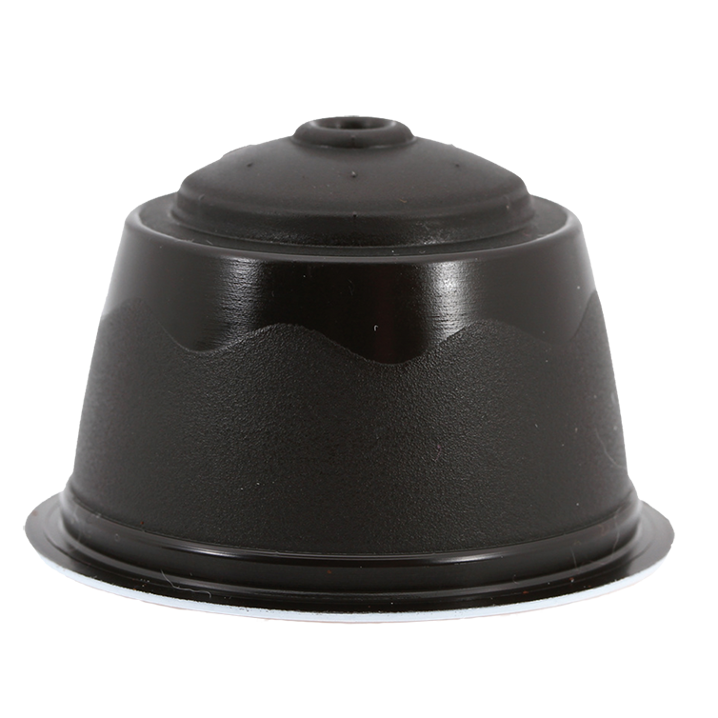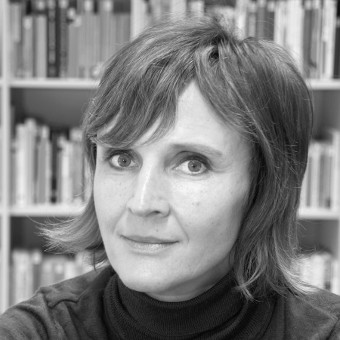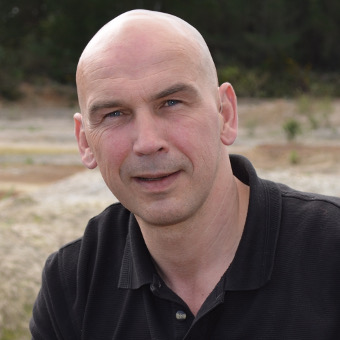05.03.2019 News
Construction unspecific Energy technologies
Building the sustainable way
The Zuse Research Association develops climate-friendly and comfortable technologies – from the basement to the roof.
05.03.2019 News
Construction unspecific Energy technologies
The Zuse Research Association develops climate-friendly and comfortable technologies – from the basement to the roof.
01.03.2019 News
unspecific unspecific unspecific
German companies comply with their sustainability reporting obligations, a current ranking shows. The top six were awarded in Berlin.
26.02.2019 Success story
Chemistry Waste Agriculture sciences
A German-Brazilian research association has succeeded in producing fertilizers and biopolymers from residual materials from sugar cane processing.
11.03.2019 News
Agriculture and forestry Plants Biodiversity
For the first time, German biodiversity researchers were able to use a statistical model to calculate the diversity of tree species in different regions of the world and produce a complete world map.
01.03.2019 Studies and statistics
Food unspecific Biodiversity
On 22 February 2019, the Food and Agriculture Organization (FAO) published the first report on the State of the World’s Biodiversity for Food and Agriculture.

08.03.2019 Product
Food Plants
Coffee is the favorite drink in Germany. According to the German Coffee Association, 86% of all adults in Germany drink it every day or at least several times a week.
13.03.2019 News
Agriculture and forestry Plants Agriculture sciences
Biodiversity researchers sound a warning: Global biodiversity is being destroyed by rapid economic and population growth, which is undermining progress.
07.03.2019 News
Food unspecific Agriculture sciences
The "Food Accelerator Network" is looking for new ideas that can have the greatest impact on the agricultural and food industries.
15.03.2019 News
Food Animals Nutritional sciences
Chemists from the Max Planck Institute for Polymer Research have analysed the traditional preparation of marine animals and developed a faster alternative.
19.03.2019 News
Food unspecific Biotechnology/Systems biology
The partnership for natural-based sweetening solutions around Zwingenberger Brain AG has a new partner: In March, a European beverage company joined the DOLCE team.
20.03.2019 News
Agriculture and forestry Plants Plant breeding research
With the parentage of the valuable spice plant saffron uncovered, botanists will be able to optimize the breeding of the valuable spice plant saffron.
21.03.2019 News
unspecific Microorganisms unspecific
Researchers at Leipzig University Library want to use microbes to learn more about late medieval writings.

18.03.2019 Interview
Agriculture and forestry Plants Agriculture sciences
Friederike Kögler has developed a method with which plants learn to survive with less water.
26.03.2019 News
Automobile Plants Chemistry
Researchers from Saarbrücken have developed a car paint that repairs small scratches in an instant: The coating consists of corn starch and reacts to heat.
27.03.2019 News
unspecific Microorganisms Biodiversity
Researchers at the Max Planck Institute for Marine Microbiology in Bremen have for the first time discovered microorganisms that need the toxic gas to grow.
28.03.2019 News
Food unspecific unspecific
Products with sustainability seals make consumers feel good. But ultimately it is the price that determines the purchase decision, as Göttingen-based agricultural economists show.
02.04.2019 News
unspecific unspecific Environmental technology
In the "rECOmine" project, researchers are developing concepts to recover recyclables and eliminate pollutants.

Researcher Profile
unspecific Animals unspecific
Munich neurobionics expert Harald Luksch is investigating the sense of orientation in animals and using this knowledge to develop algorithms for robotics.
05.04.2019 News
unspecific Fungi Biotechnology/Systems biology
Bioprocess engineers at TU Dresden have affixed fungal enzymes to metal globules, making problematic chemicals in sewage treatment plants biodegradable.
03.04.2019 Success story
Chemistry Microorganisms Chemistry
A research consortium has successfully developed enzymes that allow better dyeing of synthetic fibers and prevent pilling during washing.
09.04.2019 News
Automobile Plants Chemistry
Fraunhofer researchers have developed an artificial alternative to natural rubber - with superior properties.
11.04.2019 News
Agriculture and forestry Plants Plant breeding research
Guardian molecules detect bacterial intruders in plants and induce the death of the affected cell, as German and Chinese researchers found out.
10.04.2019 News
Chemistry Microorganisms Chemistry
A closer look at cleaning products containing probiotic bacteria reveals that they are useless, as investigations by the Karlsruhe Institute of Technology have shown.
16.04.2019 News
Agriculture and forestry unspecific Biotechnology/Systems biology
Plastic waste in the water attract the water fleas' chemical cues, thereby undermining the defence strategies of the tiny crustaceans.
16.04.2019 Success story
Chemistry Plants Chemistry
Jute bags are a common sight. However, the plant's fibers are also suitable for composite materials, as researchers in the Jute Bio-Comp project are demonstrating.
18.04.2019 News
Agriculture and forestry unspecific Agriculture sciences
Higher yields in intensive agriculture come at the expense of biodiversity. This is the conclusion of a meta-analysis conducted by environmental researchers from Leipzig.
25.04.2019 News
Food unspecific Nutritional sciences
Students from TU Berlin triumphed in the TROPHELIA ideas competition with a triple victory and a special prize for vegan product ideas.
26.04.2019 News
Agriculture and forestry Plants Agriculture sciences
A study shows that the EU obtains almost two thirds of all plant-based raw materials from Asia. Cotton and palm oil are at the top of the list.

09.02.2016 Product
Food Plants
As nitrogen fixers, lupins are great fertilisers for soil. Their seeds are rich in protein and can be used as an alternative source of protein in the food industry.
24.04.2019 News
unspecific unspecific Biotechnology/Systems biology
In Bristol, England, the Max Planck Society is establishing a research center for synthetic biology with the local university: the Max Planck-Bristol Center in Minimal Biology.
30.04.2019 News
Agriculture and forestry Plants Plant breeding research
Chinese plant researchers have deciphered and analysed the genomes of 472 different wild grapevine forms. A vine archive from Karlsruhe contributed material.
06.05.2019 News
Chemistry Plants Agriculture sciences
The insecticide clothianidin, which is banned in the EU, damages bumble bees, a field study confirms. Honey bees, on the other hand, remain unaffected.
02.05.2019 News
Chemistry unspecific Chemistry
Bio-based adhesives are not only more sustainable. They also have other advantages over their petrol-based counterparts, as an analysis by the Fraunhofer Institute for Wood Research shows.
02.05.2019 News
Consumables Microorganisms Biotechnology/Systems biology
Givaudan, the world's largest manufacturer of fragrances and flavours, opts for the biotechnologically produced spider silk proteins from AMSilk in Martinsried, Germany.
08.05.2019 News
Chemistry Plants Chemistry
Researchers at the University of Bochum have improved the lifetime of bioelectrodes by making a protein complex involved in the photosynthetic process more durable.
09.05.2019 News
unspecific Microorganisms Biodiversity
The global assessment of the World Biodiversity Council IPBES paints a dramatic picture of the situation of biological diversity on earth and calls for profound change.
09.05.2019 News
Agriculture and forestry Plants Agriculture sciences
Using a simple genetic trick, biochemists at the University of Erlangen-Nuremberg have induced potatoes to form tubers even at high temperatures.
14.05.2019 News
Chemistry unspecific Chemistry
Researchers from Wismar and Hamburg want to develop the wooden nail further for use in ecological wood construction.
14.05.2019 News
Chemistry Plants Chemistry
Fraunhofer researchers are developing new biobased adhesives that consist almost entirely of vegetable oils - including resins and hardeners.
15.05.2019 News
Agriculture and forestry Plants Agriculture sciences
Plant researchers at the Julius Kühn Institute want to breed new varieties to make yellow lupins more resistant and thus more attractive for agriculture.
16.05.2019 News
Agriculture and forestry Plants Plant breeding research
An international study confirms the theory of the origin of bread wheat and opens up new breeding potentials for the crop.

13.05.2019 Interview
Agriculture and forestry Waste Agriculture sciences
Michael Quintern breeds earthworms to transform biowaste into precious humus.
22.05.2019 News
Food Microorganisms Agriculture sciences
Algae are in high demand as food. A German-Chinese research team now wants to develop macroalgae for new applications.
23.05.2019 News
Agriculture and forestry Plants Plant breeding research
Oxygen deficiency usually harms plants. However, an international team of plant researchers reports that too much air is even harmful for the development of new leaves and flowers.
24.05.2019 News
Agriculture and forestry Plants Agriculture sciences
Leibniz researchers from Braunschweig have identified a new pathogen from dwarf parsley plants that is responsible for blocking growth.
21.05.2019 Success story
Machine and plant engineering Microorganisms Biotechnology/Systems biology
A fuel cell with a textile anode could make various sewage treatment plants almost energy neutral and also make other biotechnological processes more economical.
28.05.2019 News
Agriculture and forestry Plants Agriculture sciences
Researchers from Aachen and their partners have developed a field robot that detects weeds and removes them with electric shocks.
29.05.2019 News
Agriculture and forestry Animals Agriculture sciences
Max Planck researchers from Mainz want to use mini-sensors to ensure even temperature in beehives, thus better protecting honey bees from parasites.
31.05.2019 News
Agriculture and forestry Plants Agriculture sciences
The nano-active substance transporters known from medicine were successfully used for the first time for the treatment of dreaded plant diseases. And on top of it all, they are also made of waste.
27.05.2019 News
unspecific unspecific Bioökonomie mitgestalten
At the ICCA climate conference in Heidelberg, political and economic actors stressed the need for cooperation between government decision-makers.
28.05.2019 News
unspecific unspecific unspecific
In a statement on genome editing, the Max Planck Society argues for the targeted use of CRISPR-Cas9 in plant breeding and urges legislative changes.
03.06.2019 News
Agriculture and forestry Plants Plant breeding research
Researchers at the University of Düsseldorf are developing genetic approaches to accelerate the path to new varieties.
05.06.2019 News
Agriculture and forestry Plants Agriculture sciences
A Franco-German research project is investigating how efficient agriculture could largely do without chemical-synthetic crop protection.
07.06.2019 News
Agriculture and forestry Plants Agriculture sciences
The sustainable production of crops is the focus of a cooperation between agricultural research institutions in Germany and Brazil.
22.11.2018 News
unspecific unspecific unspecific
Following the inititative of the German University of Hohenheim, the six leading European universities regarding bioeconomy will join forces and establish a pan-European university.
23.11.2018 News
unspecific unspecific unspecific
The 2018 UN Biodiversity Conference, held until the end of November in Sharm El-Sheikh, Egypt, focusses on the implementation of global goals for the protection of biodiversity.
26.11.2018 News
Chemistry Microorganisms Chemistry
An algal technology developed by Munich scientists could help mitigate global warming. It converts carbon dioxide from the atmosphere into valuable carbon fibers.
27.11.2018 News
Agriculture and forestry Plants Agriculture sciences
The International Rice Research Institute IRRI and the Tübingen-based biotech company Computomics aim to identify new resistant rice varieties using artificial intelligence.
03.12.2018 News
Food Plants Agriculture sciences
In a new report, the international InterAcademy Partnership states that food production and consumption must change drastically to limit climate change.
06.12.2018 News
unspecific unspecific unspecific
During this years "disruptive innovation festival" numerous online sessions and podcasts explained the concept and opportunities of a circular economy and insects as food or feed.